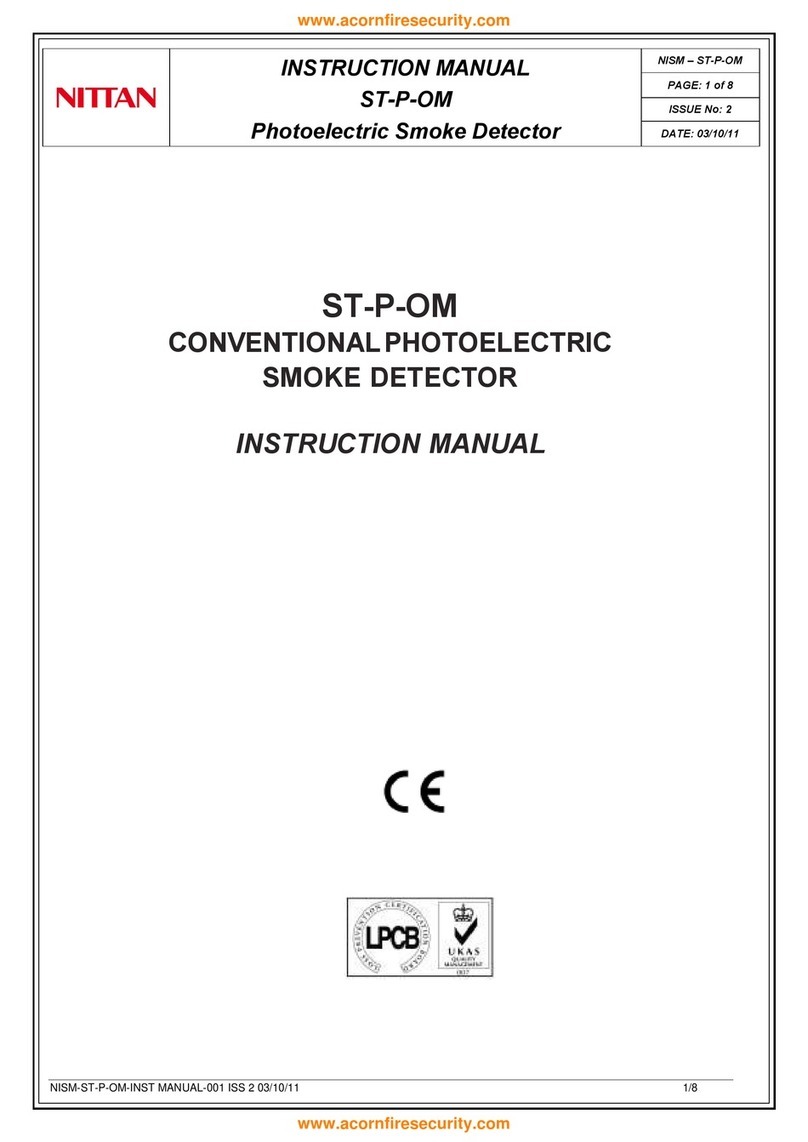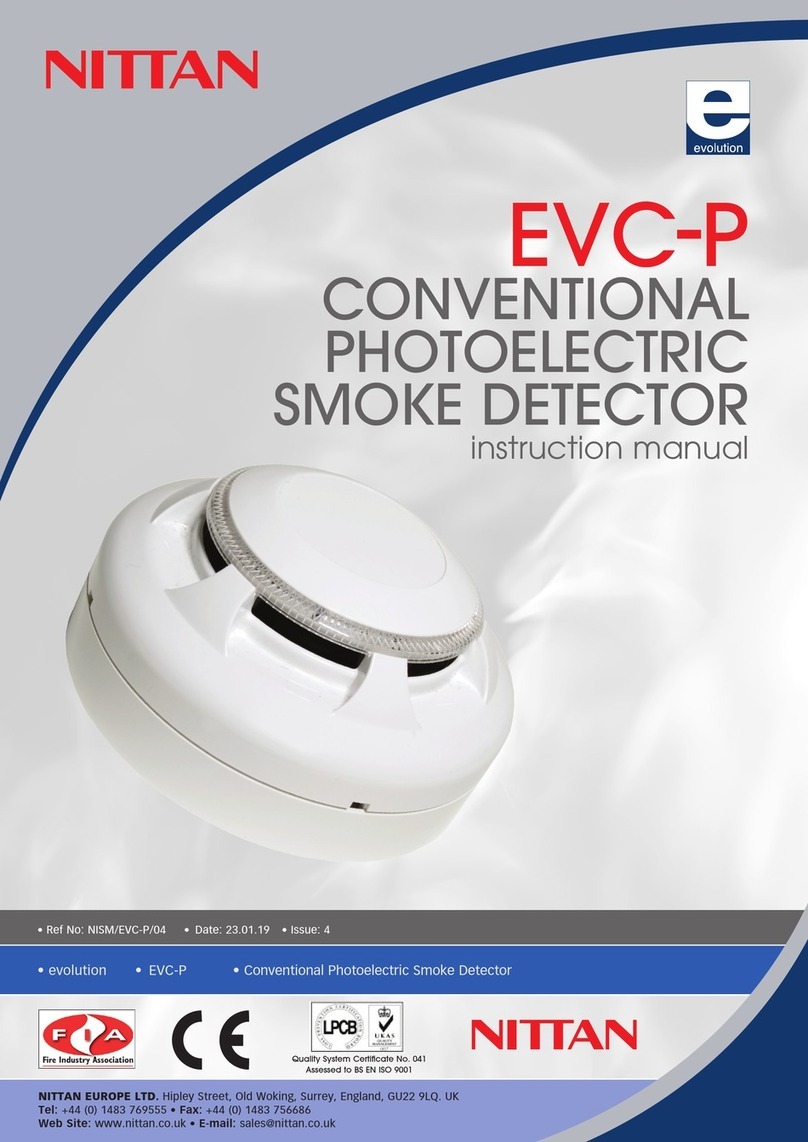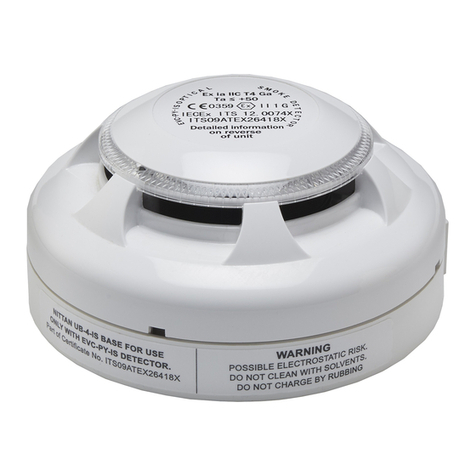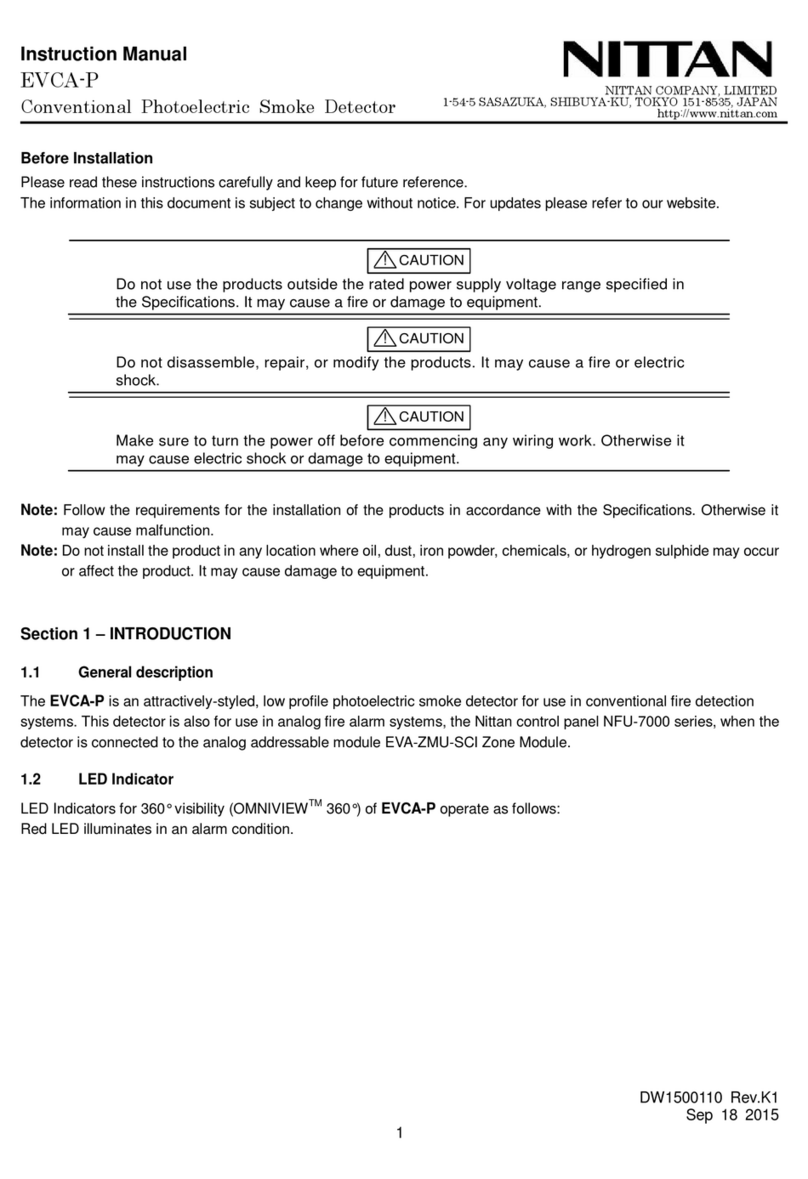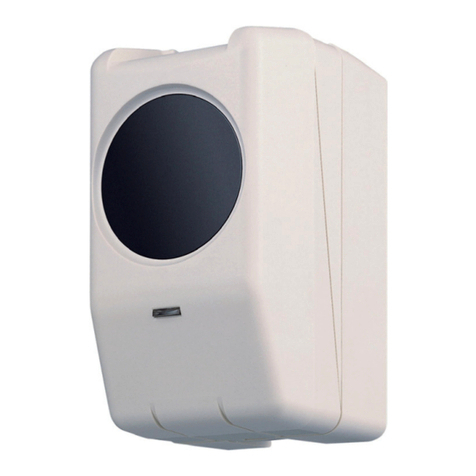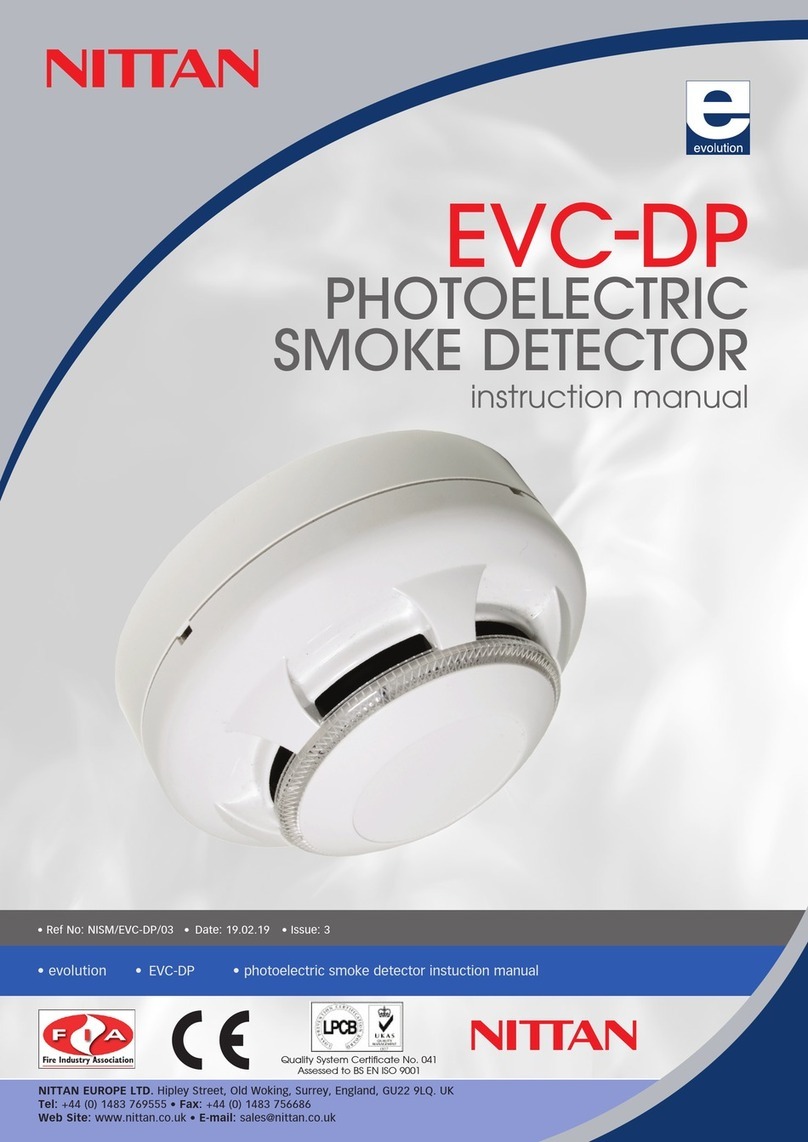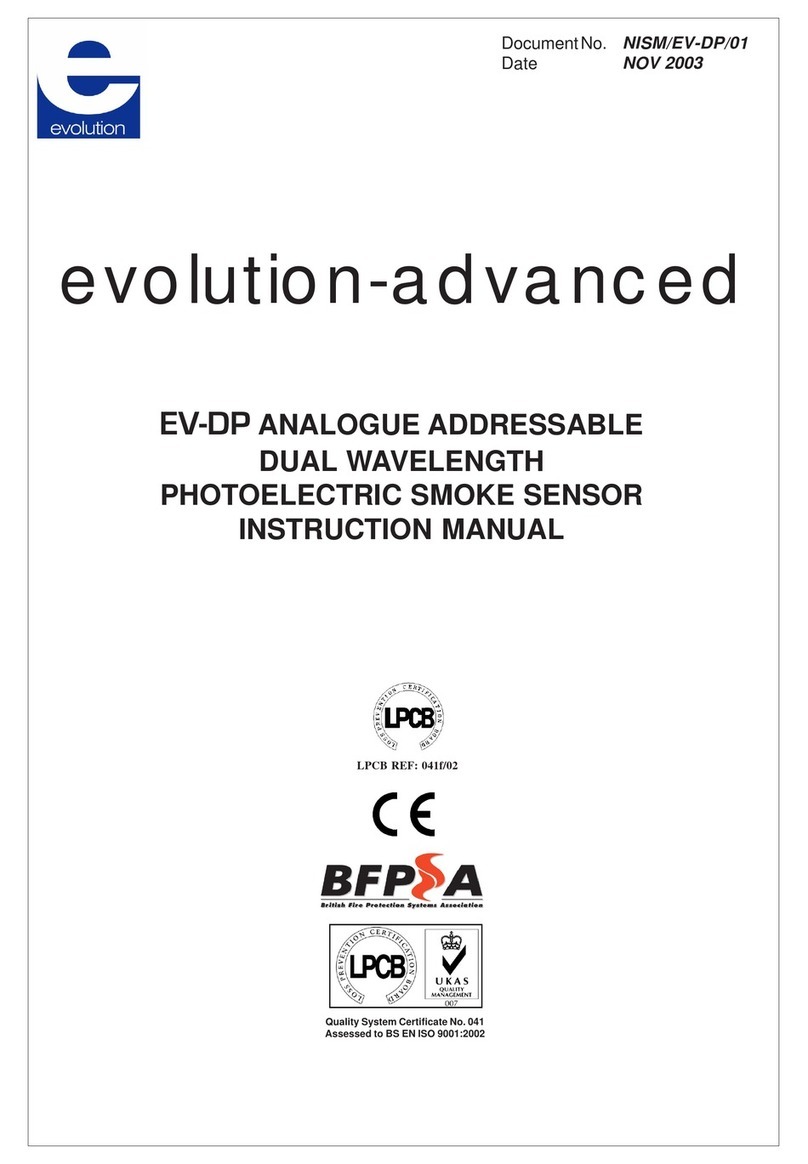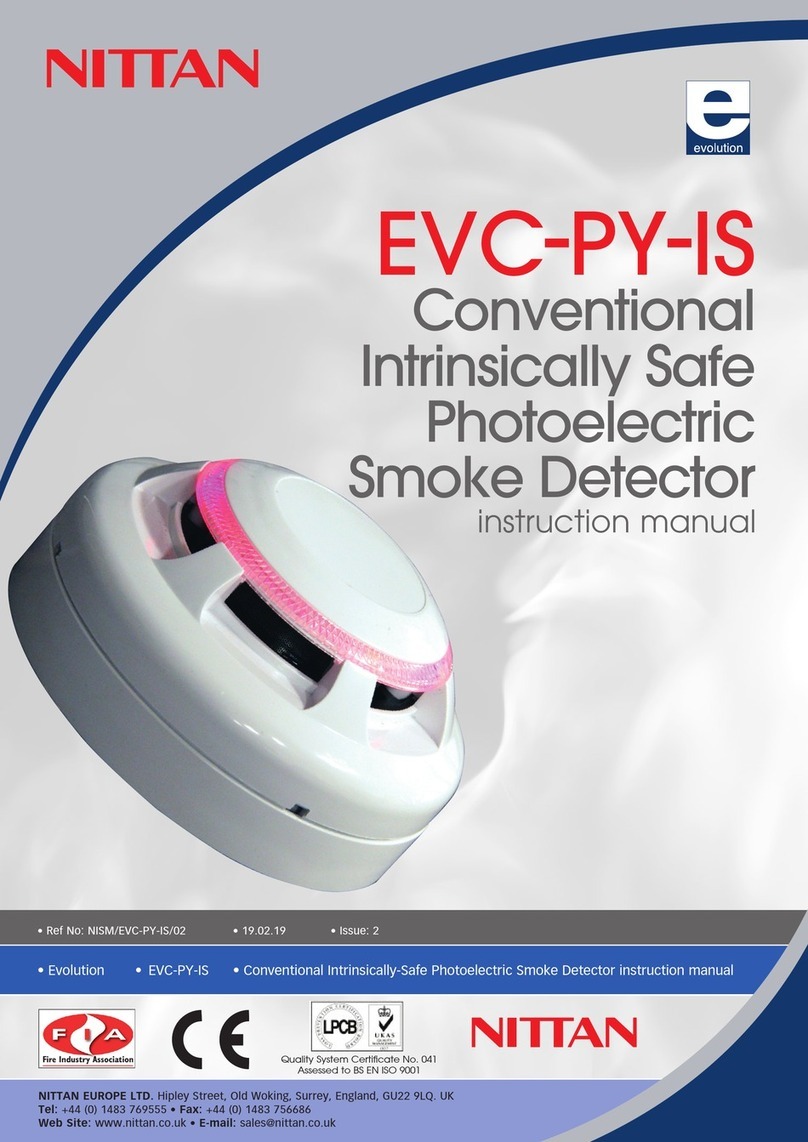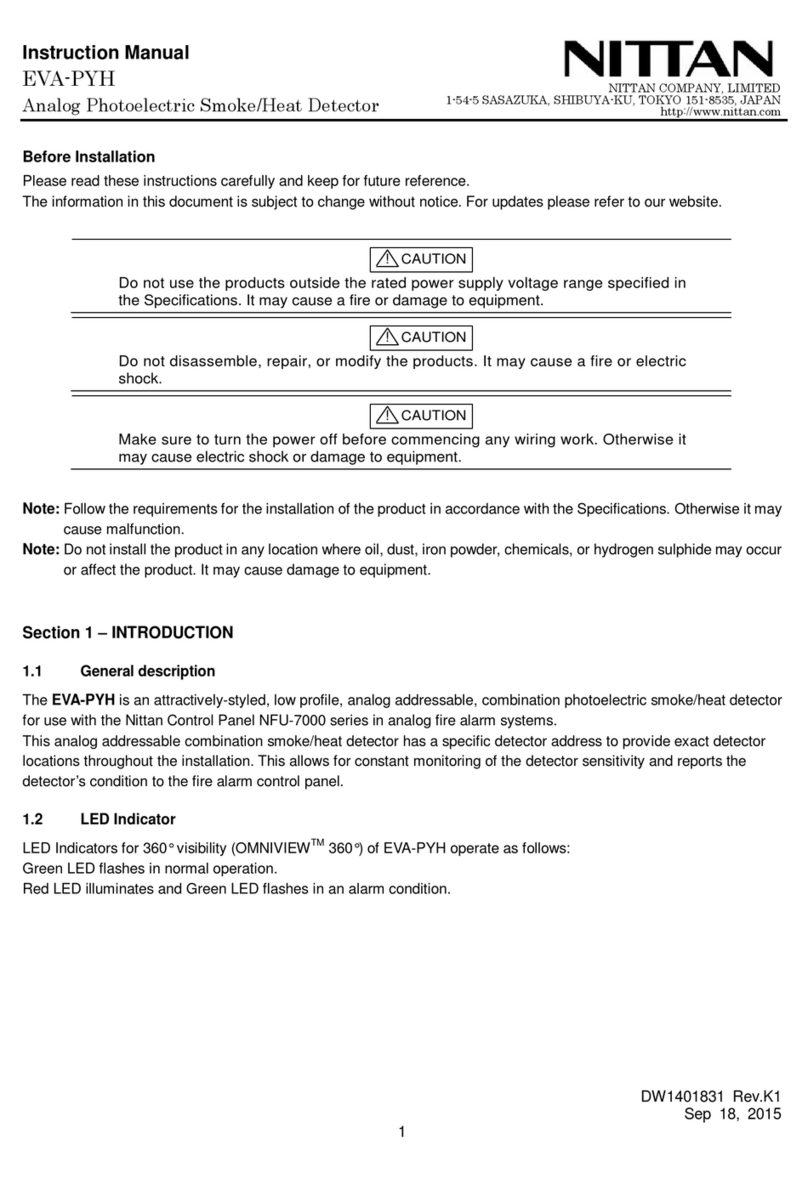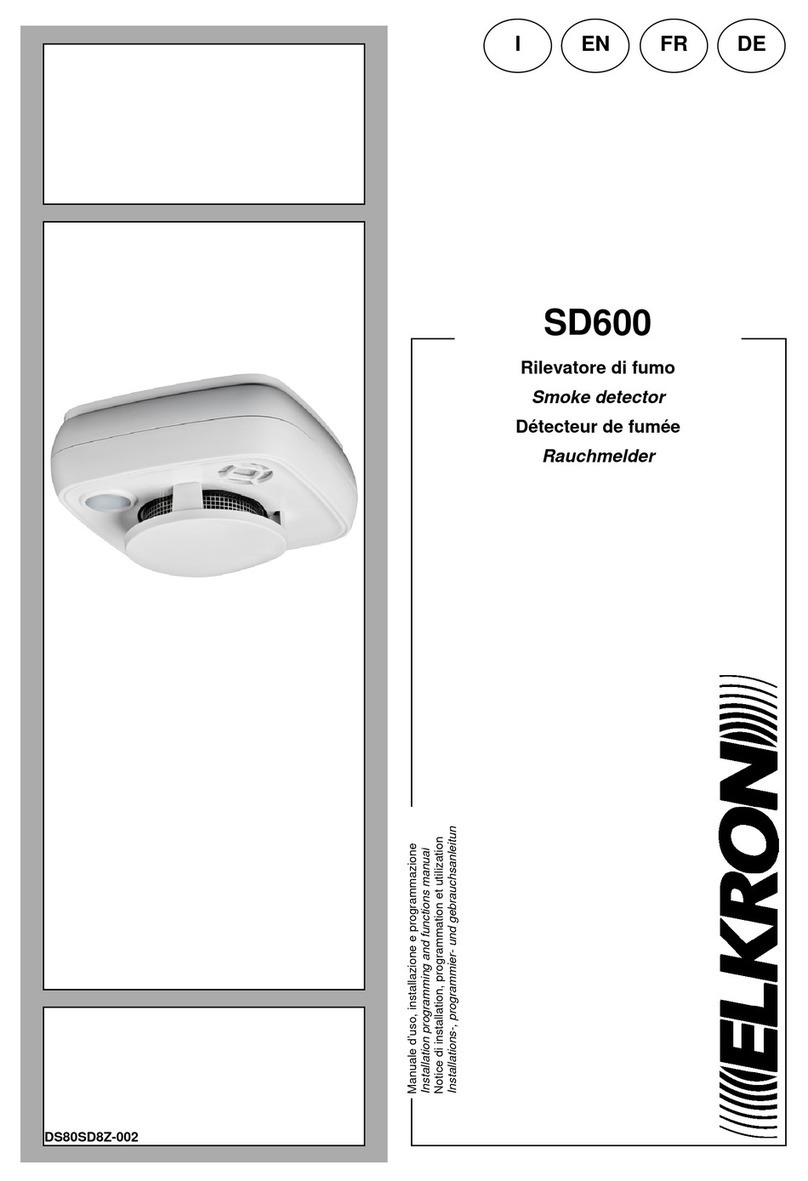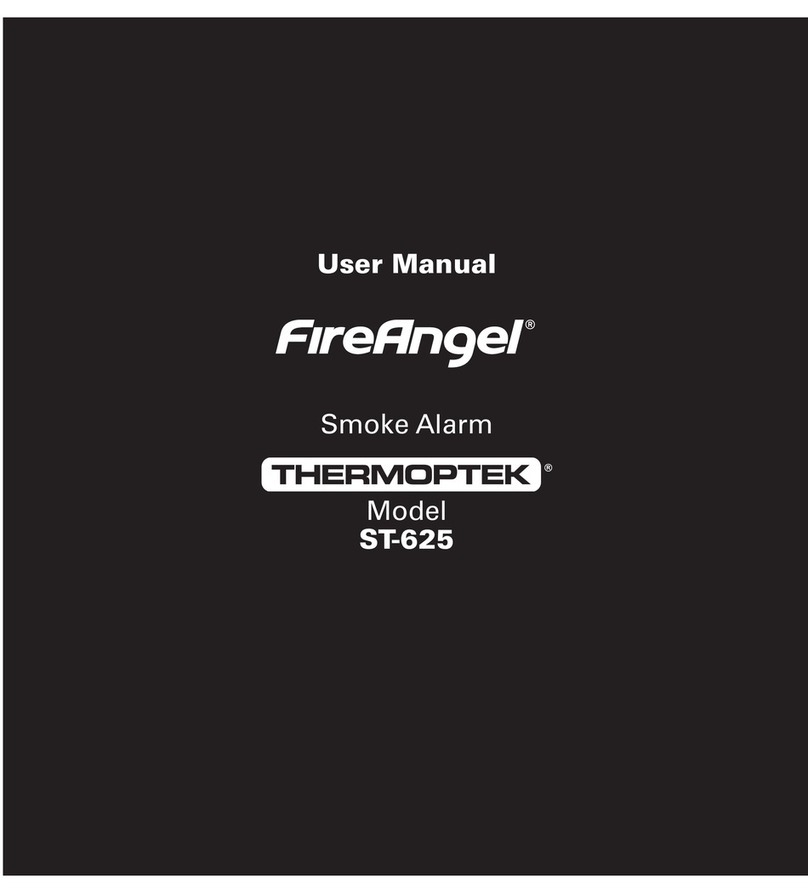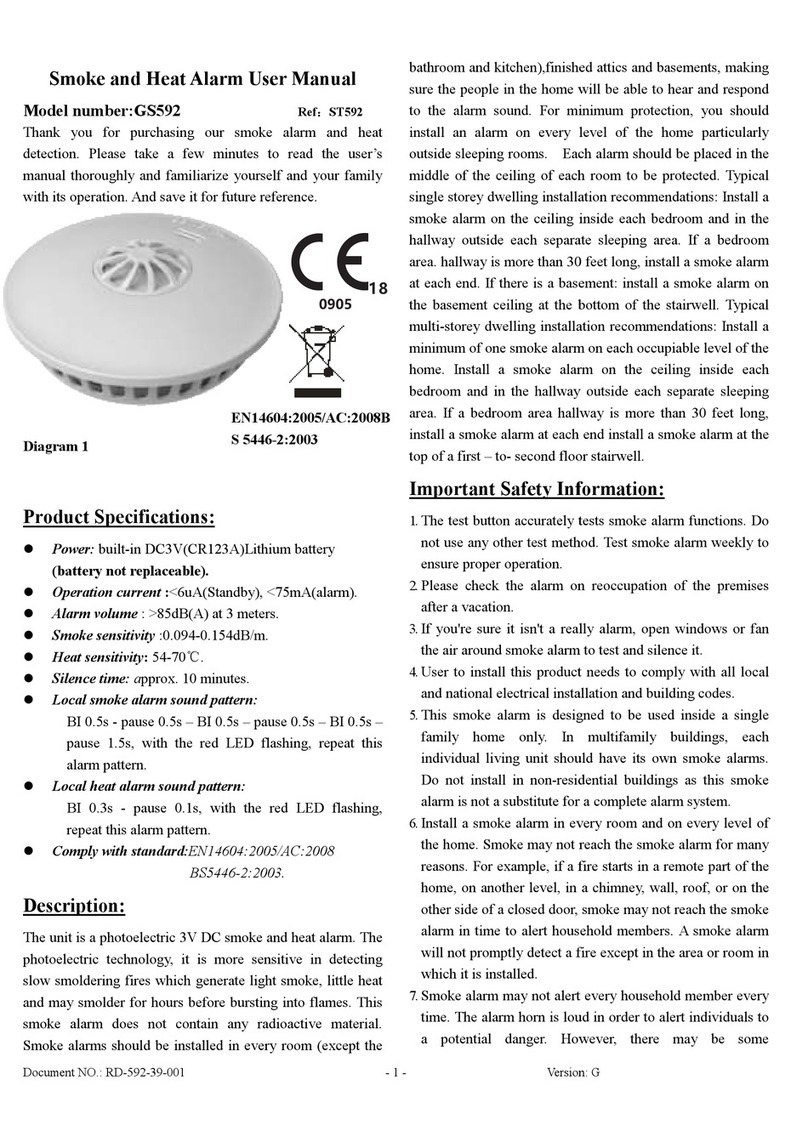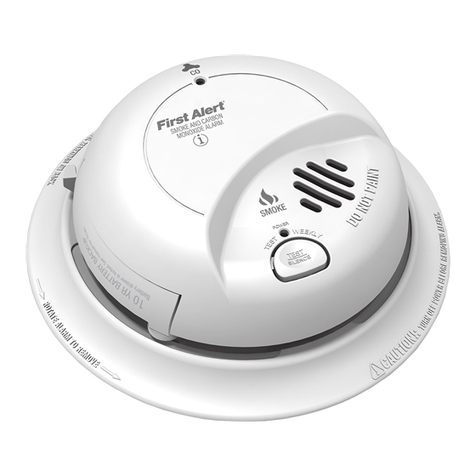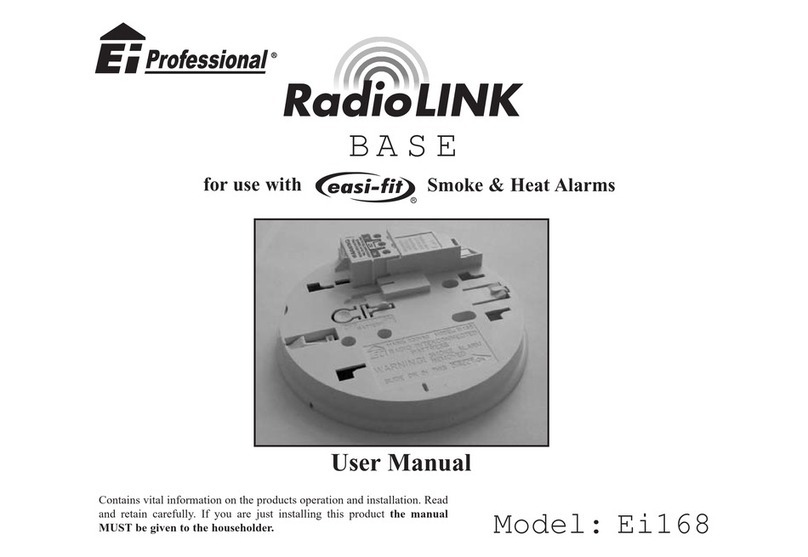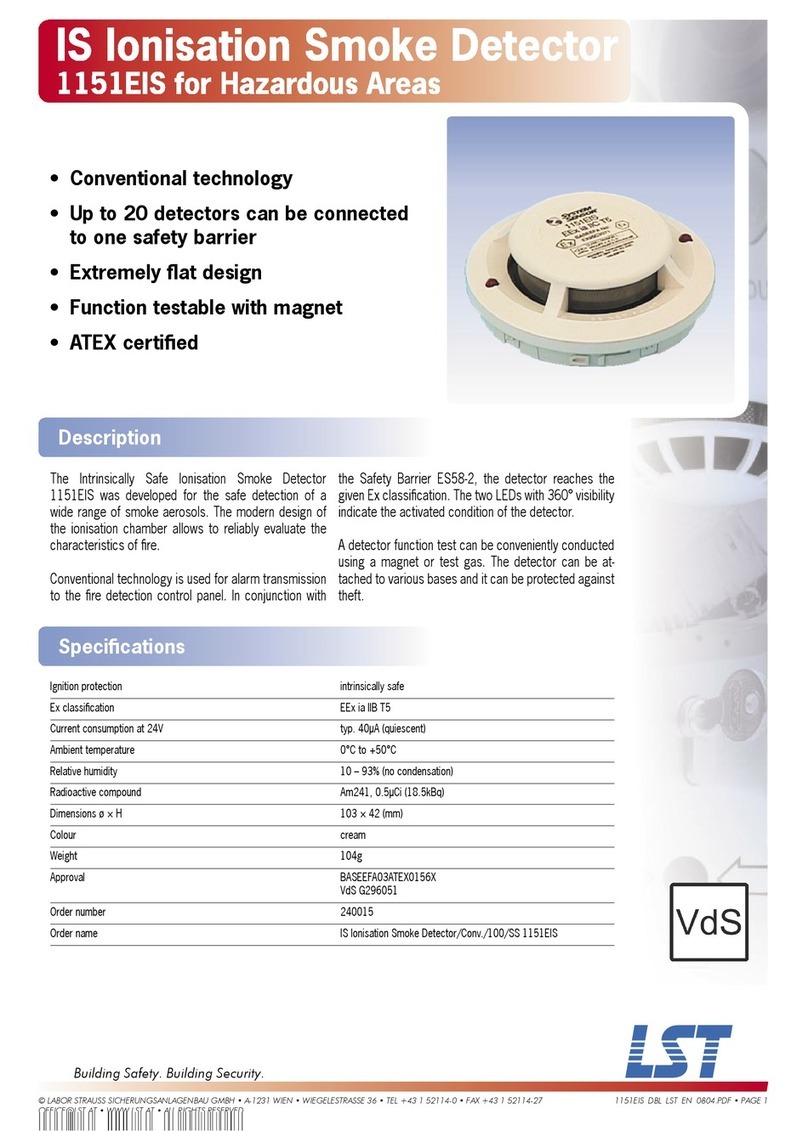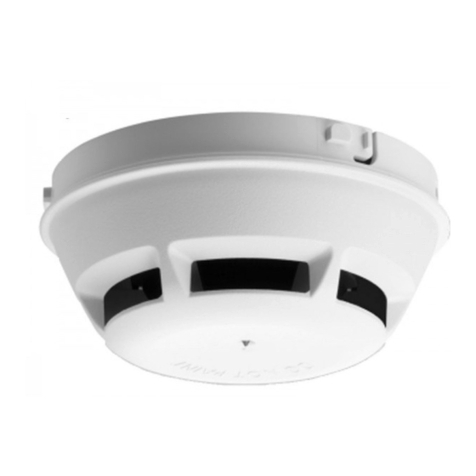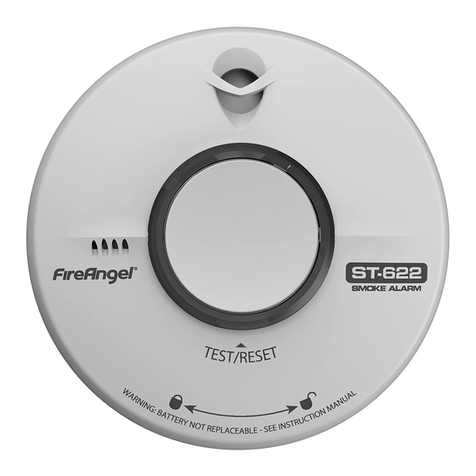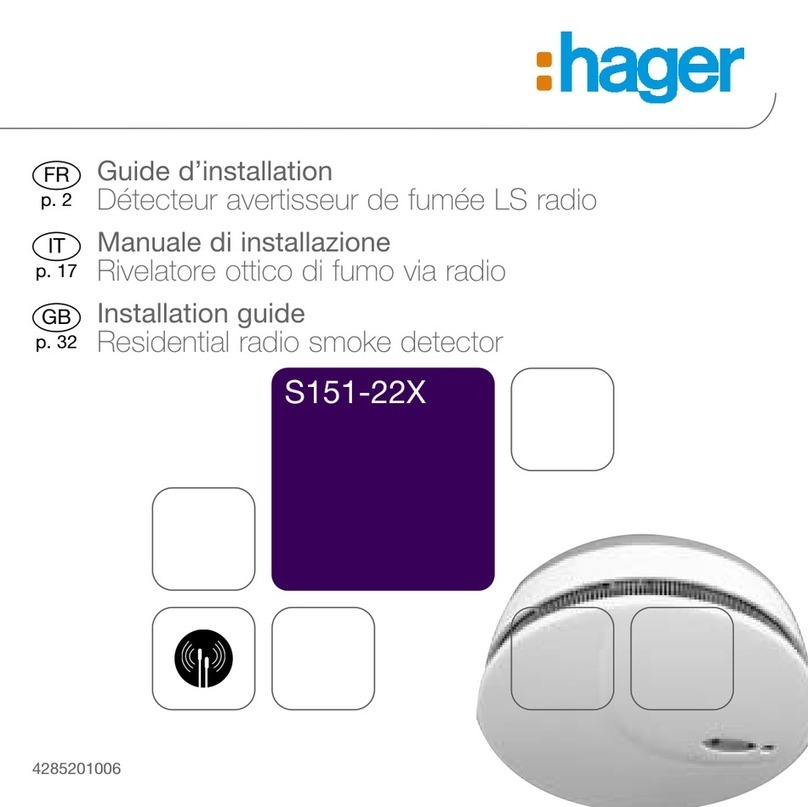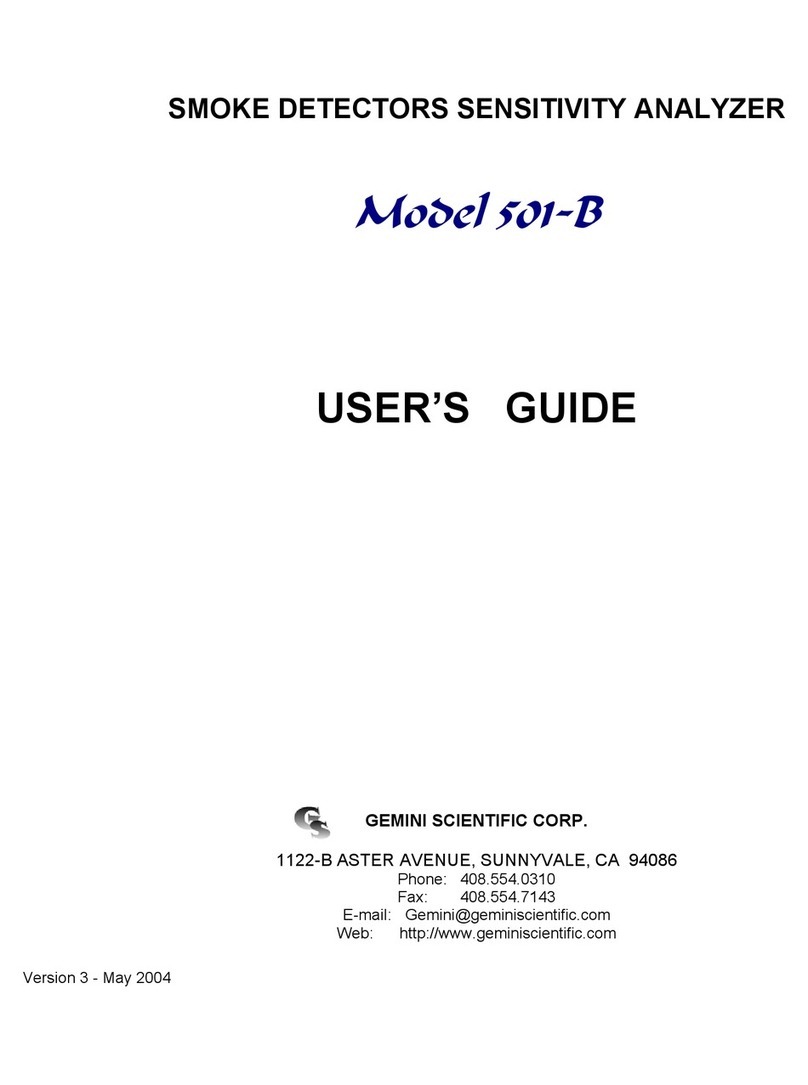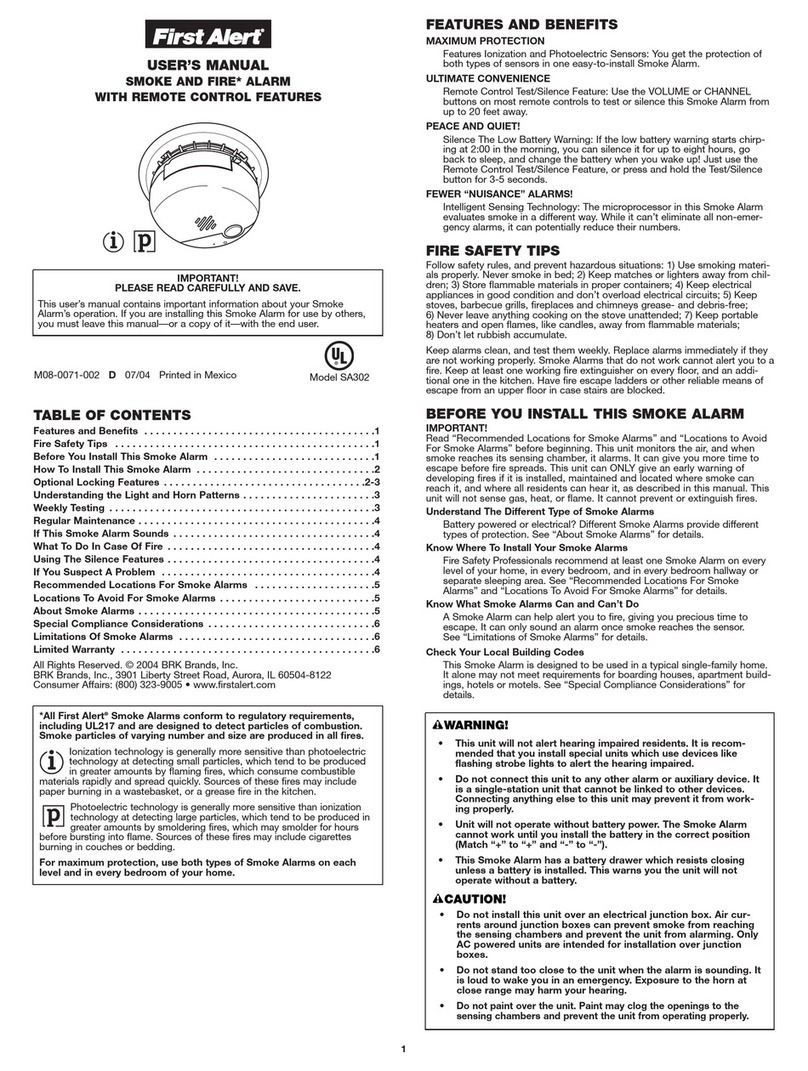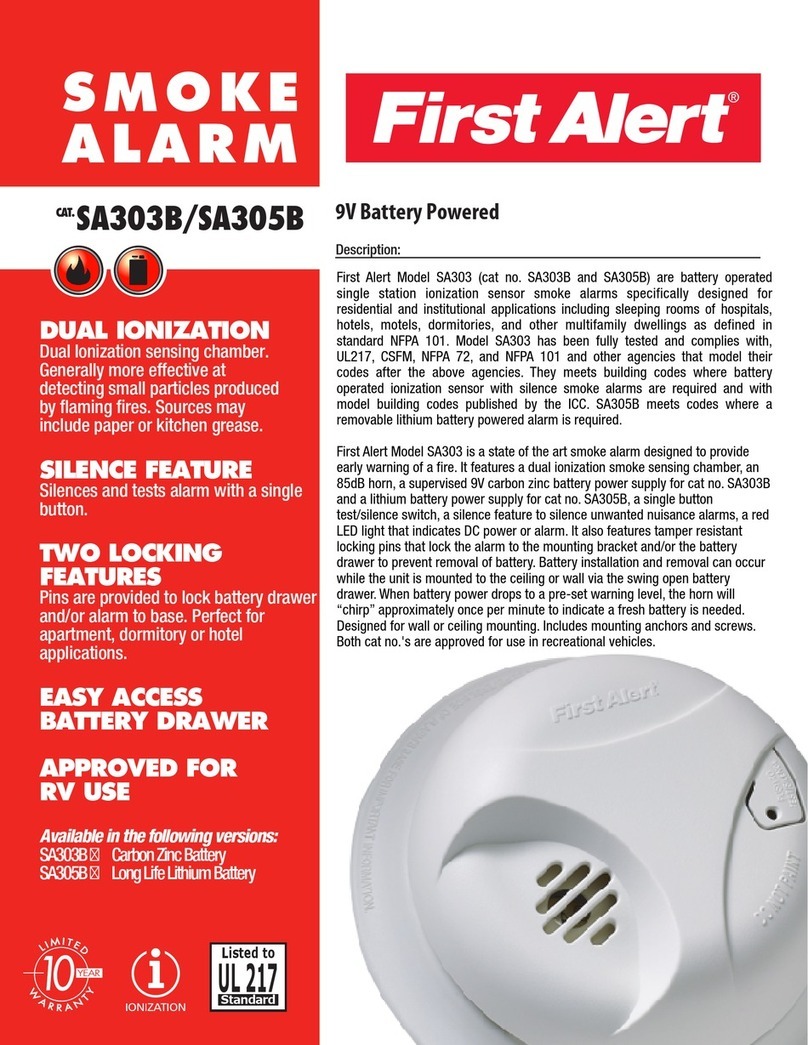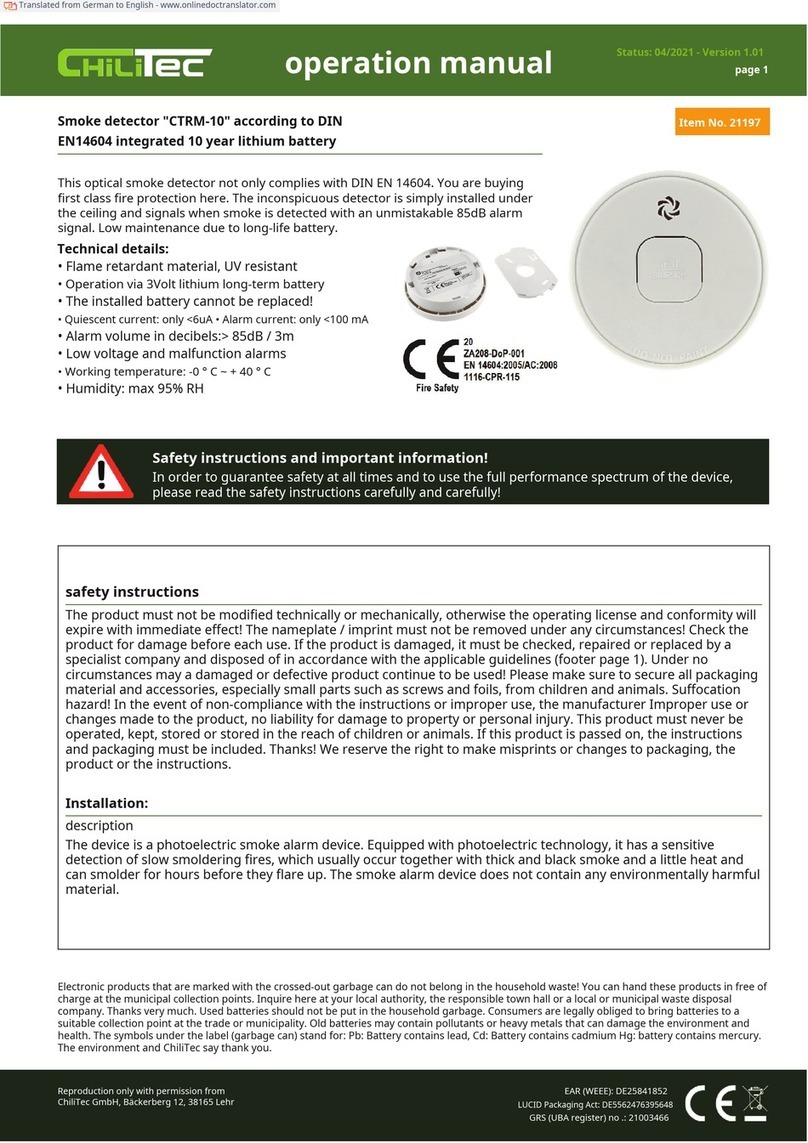
DW1500274
Rev.K3
Mar 6, 2017
Direct Heat Method
(Heat Calibur HO-HC11 Heat Detector Tester)
1. Turn Master Power switch on and press the Power
button. LCD Display and LED’s should light.
2. Select Test Type by pressing the Test Type ↕ button,
the LED will light to display selected test type:
a. ROR - Rate of Rise Temperature Test
b. FIXED - Fixed Temperature Test
3. Select Test Mode by pressing the Test Mode ↕ button,
the LED will light to display selected test mode:
c. STD - Standard Test Mode
d. MULTI - Multiple Test Mode
4. Select Temperature Range by pressing the Temp
Range ↕ button, the LED will light to display selected
Temperature Range:
a. HIGH - High Temperature Range
(190°F-210°F) - EVA-H2-H
b. LOW - Low Temperature Range
(100°F-135°F) - EVA-H2, EVA-PYH, EVA-DPH
5. Press and hold Start Test button for 2 seconds until
“Ready” is displayed on LCD.
6. Place the Heat Detector Tester over the detector to be
tested to start the test, press the outer ring against the
ceiling to start test.
a. When the test has started a beep will sound, the
test will continue as long as the outer ring makes
contact with the ceiling.
b. Hold the Heat Detector Tester over detector until
the detector alarms.
7. Remove the Heat Detector Tester from the detector to
stop testing. The Heat Detector Tester will beep twice
when test is stopped, the fan will continue to run for 15
seconds to cool unit.
If the unit is not removed before set test length (60-90
seconds), the unit beeps twice and the display flashes
between “Error”, and “Timeout” to reflect that test
stopped before the detector alarmed.
8. If testing is complete, turn the Master Power switch off.
9. The red LEDs on the detector should light with the
green LED flashing when the temperature at the
detector reaches the alarm set point. If the red LED
indicator fails to light, check the power to the detector
and the wiring in the detector base.
10. Reset the heat detector at the control panel. Detectors
that fail these tests should be cleaned in accordance
with MAINTENANCE Section in the instruction manual
of the detector and retested. If the detectors still fail
these tests they should be returned for repair.
Do not use heat guns used for paint stripping or soldering
pipes as these heat guns generate sufficient heat to
damage heatdetectors.
For the smoke detector testing (Go / No-Go)
1. For EVA-PY and EVA-PYH
To test the optical detector, introduce a certain amount
of aerosol into the detector’s head, using HSI FIRE &
SAFETY Aerosol canned smoke testers “25S” or “30S”.
Please follow the manufacturer’s recommendations on
their use.
For EVA-DPH
Use Smoke Detector Sensitivity Analyzer Model 501-B
(Gemini Scientific Corp.) to test the function of the
EVA-DPH.
Please follow the manufacturer’s recommendations on
their use except aerosol concentration setting.
Set the concentration of the analyzer to 1.0 %/ft. for this
testing.
For EVCA-P(-Z)
To test the optical detector, introduce a certain amount
of aerosol into the detector’s head, using Solo 330
Aerosol Dispenser with Solo A3 Smoke Detector Tester
(No Climb Products Ltd.). Please follow the
manufacturer’s recommendations on their use.
2. For EVA-PY and EVA-PYH
Check that the detector gives an alarm condition within
15 seconds. Check the red LED indicator is on and the
green LED is flashing on the detector. If the red LED
indicator fails to light, check the power to the detector
and the wiring in the detector base.
For EVA-DPH
Check that the detector gives an alarm condition within
40 seconds after the aerosol introduced into the
detector’s head. Check the red LED indicator is on and
the green LED is flashing on the EVA-DPH combination
detector. If the red LED indicator fails to light, check the
power to the detector and the wiring in the detector
base.






